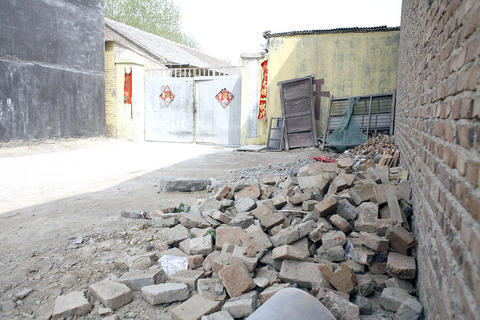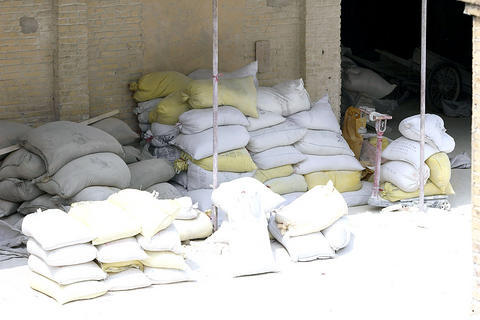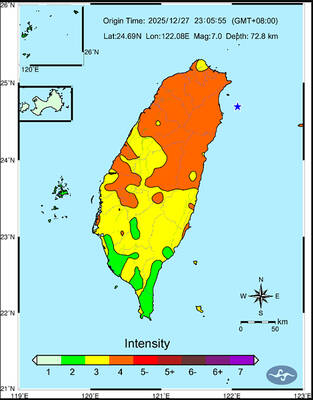A Chinese company accused of selling contaminated wheat gluten to US pet food suppliers avoided inspections partly because it did not correctly disclose its shipping contents to Chinese export authorities, according to US regulators.
The Xuzhou Anying Biologic Technology Development Co, one of two Chinese companies at the center of the huge recall of pet food that has killed or sickened thousands of animals, shipped more than 635 tonnes of wheat gluten labeled as nonfood products this year through a third-party Chinese textile company.
By listing the goods as nonfood items, the firm's shipments were not subject to mandatory inspection by the Chinese government.

PHOTO: NY TIMES NEWS SERVICE
Though a possible violation of Beijing's export policies, such mislabeling is thought to be widespread in China.
The details of the case, some of them disclosed on Friday in a circular released by the US Food and Drug Administration (FDA), are just the latest clues that Chinese feed suppliers may have been intentionally disguising the contents of their goods.
Several FDA officials are now visiting China to seek more information about how and why an industrial chemical used in plastics and fertilizer got mixed into pet food ingredients.

PHOTO: NY TIMES NEWS SERVICE
US regulators admit that six weeks after one of the biggest pet food recalls in US history, they still do not know exactly who in China manufactured the contaminated pet food ingredients or where in China the contamination took place.
Though the agency has named two Chinese companies as the suppliers of the tainted vegetable protein sent to the US, regulators suspect the companies may not have been manufacturing the feed, but buying it from dozens of other feed manufacturers in China.
Those feed producers, regulators say they believe, may have intentionally mixed melamine into the feed to inflate artificially the level of protein in the bags to meet pet food requirements.
The two Chinese companies named by US regulators last month have said little publicly since the recall.
Both companies are based in eastern China, near one of the country's biggest wheat-growing regions and also one of the centers of melamine production.
Melamine is an industrial chemical that animal feed producers here say has been intentionally mixed into feed to trick farmers into thinking they are buying higher protein meal, even though the chemical has no nutritional value.
The Chinese government said last week that it was unlikely melamine could have harmed so many pets in the US.
But on Friday, China banned melamine from use in any vegetable protein for export or for use in the domestic food market.
The FDA says that it has received reports that more than 4,000 cats and dogs died as a result of eating pet food that may have been laced with melamine.
Scientists are now struggling to determine why melamine, a chemical that is not believed to be toxic, may have turned poisonous.

A magnitude 7.0 earthquake struck off Yilan at 11:05pm yesterday, the Central Weather Administration (CWA) said. The epicenter was located at sea, about 32.3km east of Yilan County Hall, at a depth of 72.8km, CWA data showed There were no immediate reports of damage. The intensity of the quake, which gauges the actual effect of a seismic event, measured 4 in Yilan County area on Taiwan’s seven-tier intensity scale, the data showed. It measured 4 in other parts of eastern, northern and central Taiwan as well as Tainan, and 3 in Kaohsiung and Pingtung County, and 2 in Lienchiang and Penghu counties and 1

FOREIGN INTERFERENCE: Beijing would likely intensify public opinion warfare in next year’s local elections to prevent Lai from getting re-elected, the ‘Yomiuri Shimbun’ said Internal documents from a Chinese artificial intelligence (AI) company indicated that China has been using the technology to intervene in foreign elections, including propaganda targeting Taiwan’s local elections next year and presidential elections in 2028, a Japanese newspaper reported yesterday. The Institute of National Security of Vanderbilt University obtained nearly 400 pages of documents from GoLaxy, a company with ties to the Chinese government, and found evidence that it had apparently deployed sophisticated, AI-driven propaganda campaigns in Hong Kong and Taiwan to shape public opinion, the Yomiuri Shimbun reported. GoLaxy provides insights, situation analysis and public opinion-shaping technology by conducting network surveillance

Taiwan is gearing up to celebrate the New Year at events across the country, headlined by the annual countdown and Taipei 101 fireworks display at midnight. Many of the events are to be livesteamed online. See below for lineups and links: Taipei Taipei’s New Year’s Party 2026 is to begin at 7pm and run until 1am, with the theme “Sailing to the Future.” South Korean girl group KARA is headlining the concert at Taipei City Hall Plaza, with additional performances by Amber An (安心亞), Nick Chou (周湯豪), hip-hop trio Nine One One (玖壹壹), Bii (畢書盡), girl group Genblue (幻藍小熊) and more. The festivities are to

AFTERMATH: The Taipei City Government said it received 39 minor incident reports including gas leaks, water leaks and outages, and a damaged traffic signal A magnitude 7.0 earthquake struck off Taiwan’s northeastern coast late on Saturday, producing only two major aftershocks as of yesterday noon, the Central Weather Administration (CWA) said. The limited aftershocks contrast with last year’s major earthquake in Hualien County, as Saturday’s earthquake occurred at a greater depth in a subduction zone. Saturday’s earthquake struck at 11:05pm, with its hypocenter about 32.3km east of Yilan County Hall, at a depth of 72.8km. Shaking was felt in 17 administrative regions north of Tainan and in eastern Taiwan, reaching intensity level 4 on Taiwan’s seven-tier seismic scale, the CWA said. In Hualien, the